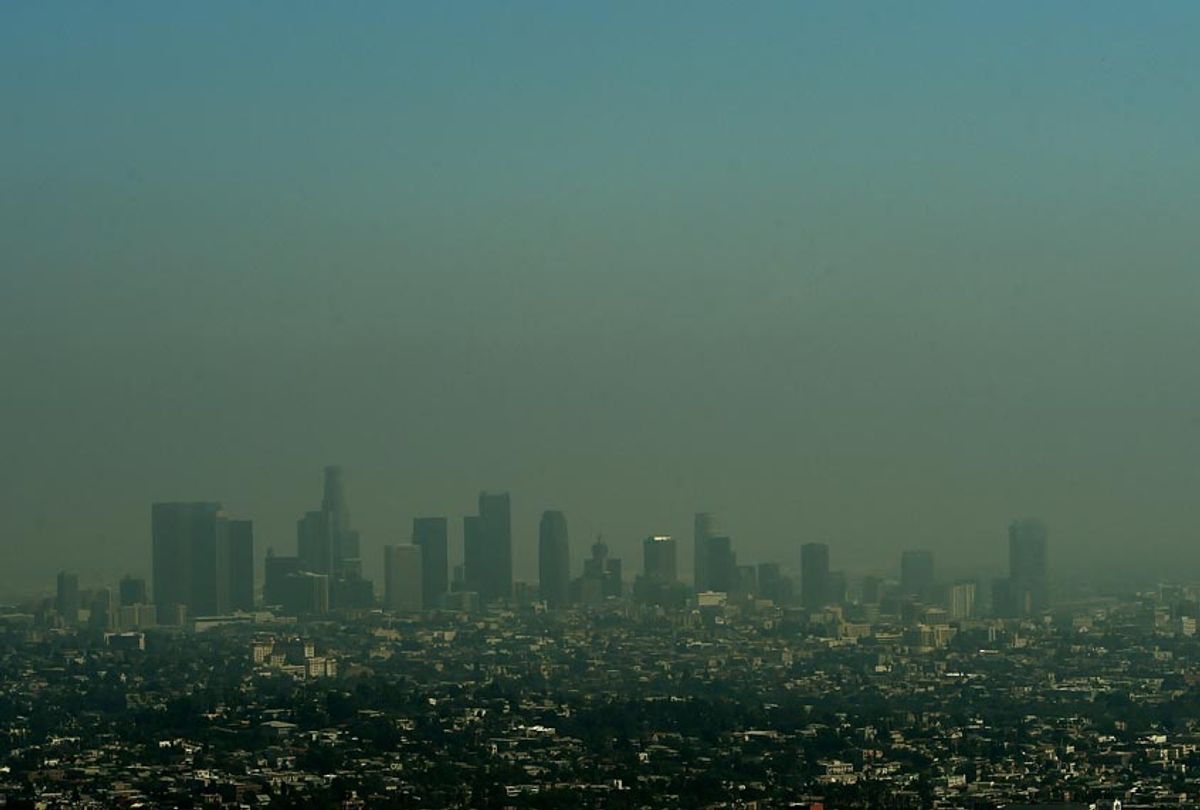Meet 60623, the Chicago zip code containing the North Lawndale and Little Village neighborhoods, one of the country's biggest frontlines in the battle for environmental justice.
Tucked into the city's Southwest Side, the once-industrial corridor is now a part of the region's quickly growing warehouse and logistics network. What does that lead to? Air pollution. More diesel air pollution than anywhere else in the country, according to the Environmental Protection Agency. What that doesn't lead to: well-paying jobs. Nearly 45 percent of children and 30 percent of adults live in poverty. In addition, there's the lethal combination of over-policing and incarceration, compounded by the area's racial makeup — 67 percent Latino and 30 percent Black. It's also home to the Cook County Jail, the largest jail in America.
So how, you might ask, does it rate as one of the most sustainable zip codes in Chicago?
A new study authored by researchers at McGill University in Montreal and the University of Michigan School for Environment and Sustainability has the answers. The study, which was the first national-level analysis of the energy use and carbon emissions of roughly 60 million American households, found that even though energy-efficient homes are more often found in white neighborhoods, carbon emissions from these neighborhoods are significantly higher than those in majority Latino and Black neighborhoods.
Chicago's 60623 zip code illuminates this. The average resident in the zip code emits the least amount of greenhouse gases out of all the city's 67 zip codes, according to the study. Households in the community are also extremely energy efficient. In comparison, the average resident in the city's affluent, majority-white Near North Side emits 2.8 times more greenhouse gases than those in the Southwest Side community. Homes in 60623 are also 1.5 times more energy-efficient than those on the Near North Side.
The study found this disparity all across the country. Using statistical modeling to examine emissions, while also considering factors such as building age, ownership, and size by neighborhood, the study found that across the U.S., Latino neighborhoods have the lowest per capita emissions, at only 60 percent of white neighborhoods. While Black neighborhoods emissions are higher than Latino neighborhoods, they're still just 90 percent of those in white neighborhoods. The discrepancy has far-reaching climate impacts: Residential energy use represents roughly one-fifth of annual greenhouse gas emissions in the United States.
What this study gets at, co-author Tony Reames told Grist, is the "imbalance between energy benefits and energy burden." Black and Latino households are not only using less energy but paying more for it — financially and socially. According to a 2020 report by the American Council for an Energy-Efficient Economy, or the ACEEE, compared to white households, Black households spend 43 percent more of their income on energy costs, Latino households spend 20 percent more, and Native American households spend 45 percent more.
This burden trickles down, says Reames, a senior advisor with the U.S. Department of Energy, making Black and Latino households less likely to use heat during brutal winters or fans and air conditioners during scorching summers. With less disposable income, these growing necessities become too expensive to access. "People that are struggling financially and then have high energy burdens are forced to make tough decisions that slowly impact life outcomes," he said.
At the core of the disparity is the country's growing wealth gap, which relates to how both homes and entire communities are built and resourced. This has roots that go back decades, from redlining to racial covenants and racial segregation, which all worked in tandem to force Black and Latino families into deliberately under-resourced and environmentally toxic corridors, making it difficult to build wealth and ownership across generations. Today that has left Black and Latino families less likely to own their homes and subsequently less likely to have a say in energy-efficiency measures. It has also made it more likely that homes in majority-white communities are spatially larger, thus requiring more energy use, despite being better insulated and equipped with more efficient appliances.
When looking at a place like Chicago, one of the most segregated cities in America, this is felt most harshly in communities that are extremely dense, such as the 60623 zip code, or experiencing disinvestment, like the South Side neighborhood of Englewood. In Englewood, a neighborhood that is 95 percent Black, more than two-fifths of residents live in poverty and 80 percent of residents are renters — the highest rate in all of Chicago — which can all be traced back to discriminatory housing practices. Yet residents in the zip code emit the fifth-lowest amount of greenhouse gases and maintain the fifth most energy-efficient homes in the entire city, according to the study. This is all despite Black Chicago households' energy burden — meaning the share of a household's income that is used on energy bills — being 71 percent higher than that of white households, according to the ACEEE.
The inequalities in household energy consumption represent bigger social, environmental, and economic inequalities, Reames says, but they can also "be used as a pathway to solve a lot of these environmental, economic, and social ills." The study outlines several solutions, such as using federal, state, and local funds, such as the recently passed Bipartisan Infrastructure Law, to fund energy retrofitting for homes in disadvantaged communities; increasing household access to solar panels; and disincentivizing high energy consumption through fees for homes that fail to meet per capita energy use benchmarks.
There are a few funding and implementation models across the globe to follow, the study outlines. One example is the use of National green banks — federally backed financial institutions focused on green projects and clean energy — which already exist in countries such as Malaysia and Japan. The study suggests that the formation of a national green bank in the U.S. would give the country a long-term funding plan for national energy efficiency programs focused on inequities in the energy sector, while also focusing on producing low-carbon technologies. It could help fund "green business loans" to support Black and Latino owned clean energy businesses in affected communities.
In the immediate future, as the country turns its attention to a growing housing crisis, the study suggests implementing new zoning codes that "reduce future energy needs and related carbon emissions for the tens of millions of homes that will be built in the U.S. in coming decades."
This is how the battle over energy efficiency could be used to tackle issues around homeownership, poverty, poor health outcomes, and joblessness, Reames says. "Energy justice bridges clean vehicles to get to jobs; Clean housing energy is connected to health and wellbeing; Then, making homes cleaner equals actual jobs in the clean energy space," he said. "We can transition away from our current energy system, make communities cleaner while improving health outcomes and building jobs."


Shares